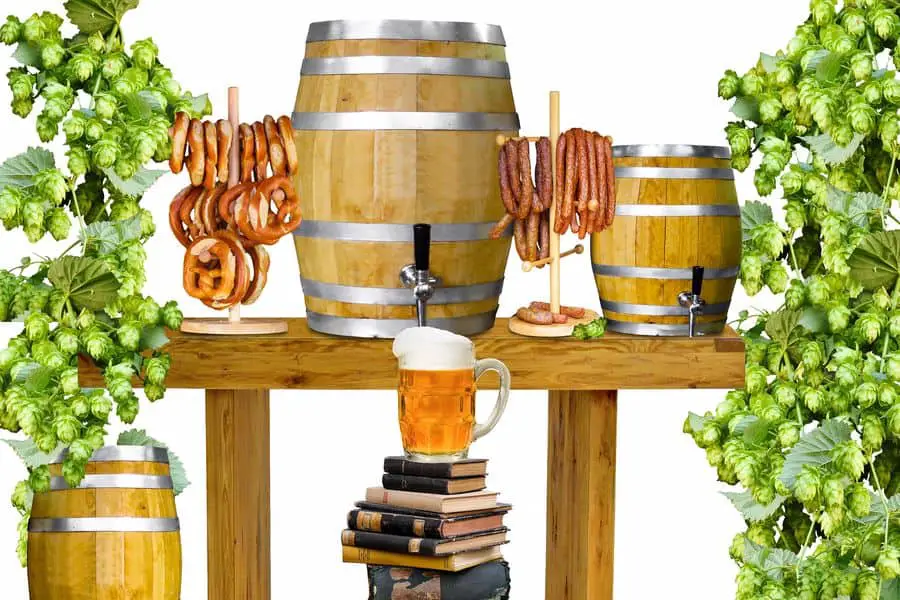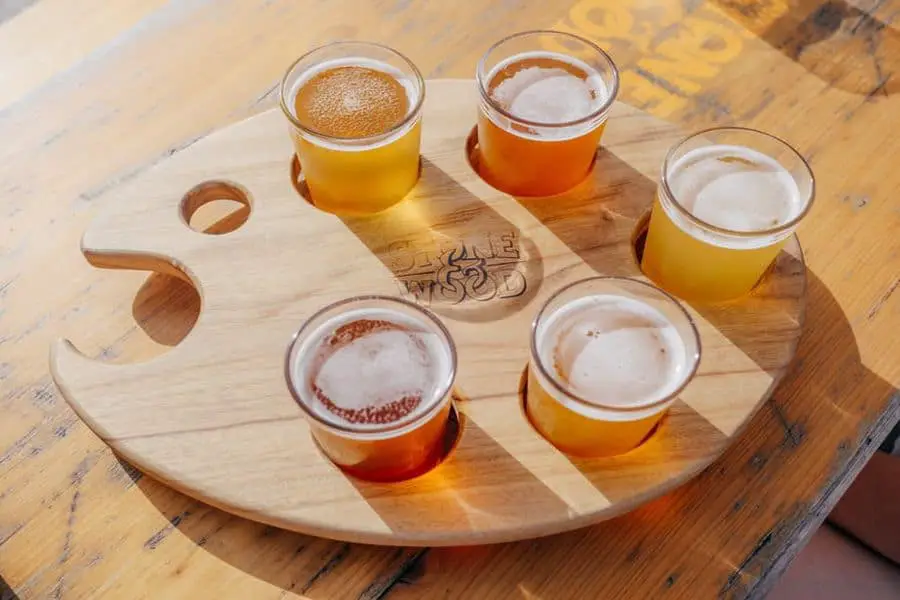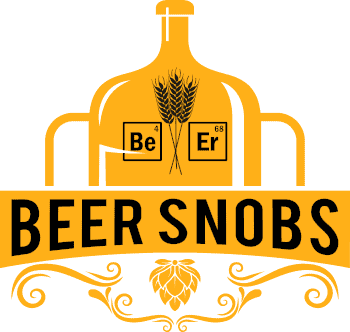If you buy something through a link in our posts, we may get a small share of the sale.
Expanding your homebrewing hobby is a great adventure. Besides educating yourself, you will find yourself brewing different varieties of high-quality beers. Perhaps if you equip yourself with the best homebrew books, you can learn from the experts and perfect your homebrewing skills.
Contents
- My Top Homebrewing Books Reviews
- Best Overall Homebrew Book: A Handbook of Basic Brewing Calculations
- Best Homebrew Book for the Money: Homebrewing for Dummies
- Best Cheap Homebrew Book: The Complete Joy of Homebrewing, Fourth Edition
- Best Homebrew Book With Recipes: Brewing Classic Styles: 80 Winning Recipes Anyone Can Brew
- Best Homebrew Book for Yeast: Yeast: The Practical Guide to Beer Fermentation (Brewing Elements)
- Factors to Consider for Homebrewing Books
- Related Questions
- Conclusion
My Top Homebrewing Books Reviews
Different homebrewing books contain various details regarding home brewing. My best homebrew books reviews will assist you in choosing the best copy.






Best Overall Homebrew Book: A Handbook of Basic Brewing Calculations

Authored by Stephen Holle and Ray Klimovitz, this book is a must-have for all homebrewers. The brewing equations in A Handbook of Basic Brewing Calculations will guide you in applying good chemistry in your brewhouse.
Unlike Home Brew Beyond the Basics: All-Grain Brewing & Other Steps, which has various homebrewing recipes, this book only contains equations and charts. Even though the information inside is not ideal for a typical homebrewer, it is essential for every process.
Unlike Homebrewing For Dummies, the book covers the most crucial part of brewing. The formulas ensure that you have the correct hop amount for a particular IBU, yeast pitch rate, calcium, and carbon dioxide volumes.
For instance, it will assist you in determining the right gypsum amount to provide the desired calcium ppm in the brewing water, the ideal priming weight for the desired carbonation level, the mash water temperature for the desired mash temperature, and the suitable yeast slurry amount for the expected rate of yeast pitch.
Most importantly, it covers dispensing draught beer formulas, which are helpful when having a mini kegerator at home. If you want to brew the best beer, consider following these formulas.
Pros
- The book is well illustrated with calculations
- It includes a formula for every brewing process
- It is ideal for both beginners and advanced brewers
Cons
- The copy is the most expensive on my list
- It does not include brewing recipes
- Holle, Stephen (Author)
- English (Publication Language)
- 95 Pages - 11/01/2003 (Publication Date) - Master Brewers Assoc of the Amer (Publisher)
Best Homebrew Book for the Money: Homebrewing for Dummies

Even though it does not seem like a definitive homebrewing guide, Homebrewing For Dummies is close. Written by Marty Nachel, this book is easy to use, and it has a close approachability to other homebrewing books.
Unlike Brewing Classic Styles: 80 Winning Recipes Anyone Can Brew, ideally suitable for professional homebrewers, Mart Nachel has authored this book depending on the brewing competence logical order. Therefore, it is ideal for beginners to advanced homebrewers.
First, it is ideal for beginners considering it covers essential brewing equipment, different techniques, ingredients, step-by-step processes, and sanitation. In addition, the intermediate homebrewers are also covered with specialty malts, secondary fermentation, steeping, and partial mashing.
Most importantly, the professional homebrewers are covered with in-depth information regarding mashing procedures, yeast harvesting, bottling, and kegging. Other sections included in this book are:
- Green brewing.
- Gluten-free brewing.
- Evaluating your beer.
- Troubleshooting your beer.
- FAQs included.
- Becoming a more DIY brewer.
The recipe section contains three categories, all having various brewing recipes and beginners tips too. The categories include Ale, Lager, and Mixed-style. Besides, there is an additional category in the recipes section for brewing ciders and meads.
Pros
- Ideal for beginners, considering it includes basic to advanced brewing information.
- It includes extract and all-grain recipes for brewing lager and ale.
- Available in both kindle and paperback formats.
Cons
- Like Homebrewing for Dummies, it is not suitable for advanced brewers as it offers more basic information.
- The copy includes expensive methods of brewing beer.
- Nachel, Marty (Author)
- English (Publication Language)
- 409 Pages - 07/28/2024 (Publication Date) - For Dummies (Publisher)
Best Cheap Homebrew Book: The Complete Joy of Homebrewing, Fourth Edition

Authored by Charlie Papazian, The Complete Joy of Homebrewing, Fourth Edition is an affordable classic homebrewing book. Its predecessor only introduces you to the possibilities and fun of DIY beer.
However, this new version covers most of the brewing basics alongside awesome and funny drawings. It contains much more information than the Homebrewing For Dummies regarding fermentation secrets, hop varieties, and beer kit tips.
All in all, the book is an essential guide to brewing different varieties of beer at home. The guide can be used to brew beers such as lagers, bitters, meads, stouts, and ales. The author also includes brewing science, brewing tips, beer lore, and its history in this book.
The book will certainly get you started in your homebrewing activities with its home brewery building basics, professional homebrewing recipes, simple instructions, and the latest brewing advancements.
Unlike A Handbook of Basic Brewing Calculations which contains strict information on brewing equations, this copy focuses much on providing recipes.
Pros
- Favorable for brewing a wide variety of beers from the comfort of your home
- It offers fermentation secrets to help improve the beer’s taste
- The copy is available in both paperback and kindle formats
Con
- It doesn’t provide much information about brewing equations which makes it difficult for beginners to make calculations
- Includes no information regarding beer troubleshooting
- Papazian, Charlie (Author)
- English (Publication Language)
- 496 Pages - 09/30/2014 (Publication Date) - William Morrow Paperbacks (Publisher)
Best Homebrew Book With Recipes: Brewing Classic Styles: 80 Winning Recipes Anyone Can Brew

John Palmer and Jamil Zainasheff are the authors of the 317-page Brewing Classic Styles: 80 Winning Recipes Anyone Can Brew book. Jamil Zainasheff is a renowned brewer who holds two gold medals for the best worldwide brewer. In this book, he shares his award-winning brewing techniques with local and international brewers.
The book contains grain and extract-based recipes to assist other brewers in enjoying top-quality homebrew beer. It is written in 27 chapters to cover the Beer Judge Certification Program published standard homebrew competition categories. In addition, it includes a recipe for over 80 different beer brewing styles sub-categories.
In this book, John Palmer, How to Brew author, recommends the best and readily available beer ingredients, plus their selection and brewing tips. All in all, the two legendary homebrewers provide a tested collection of recipes to use every time you want to brew some beer at home.
Even though the book is not much recommended for beginner homebrewers like the Homebrewing for Dummies, it is a valuable guiding light to them, considering it has a section for homebrewing basics. The section features charts, brewing ingredients, and tips on how to choose and brew them.
Unlike the Homebrewing for Dummies copy below, this one concludes with four appendices. The appendices contain bottle priming rates, yeast pitching rates, and starts, partial stopover mashing, and steeping specialty grains.
Pros
- It has great recipes for brewing high-quality beers.
- The copy suits both beginner and advanced brewers.
- Available in Amazon in both paperback and kindle formats
Cons
- Unlike A Handbook of Basic Brewing Calculations, it does not include much information regarding brewing calculations.
- It contains liquid malt recipes only.
- Used Book in Good Condition
- Jamil Zainasheff (Author)
- English (Publication Language)
Best Homebrew Book for Yeast: Yeast: The Practical Guide to Beer Fermentation (Brewing Elements)

As its title suggests, Chris White and Jamil Zainasheff have authored this 300-page book to focus on yeast, the most minor yet important brewing element. Unlike A Handbook of Basic Brewing Equations, which concentrates entirely on brewing equations and charts, Yeast: The Practical Guide to Beer Fermentation (Brewing Elements) concentrates altogether on yeast.
Its first two chapters explain the history, biology, and yeast by-products. Most helpful information regarding yeast is contained in the third to seventh chapters. These five chapters exclusively discuss the factors to consider when selecting your brewing yeast, how it ferments, store it, and yeast troubleshooting.
Unlike A Handbook of Basic Brewing Calculations, which exclusively has brewing formulas, equations, and calculations, this copy carries strict information regarding yeast only. The book might not be ideal for every homebrewer, but for any homebrewer who wishes to understand more about yeast and how to handle it. The book includes no brewing recipes.
Pros
- Has a step by step procedure for easy brewing
- Unlike A Handbook of Basic Brewing Calculations, the copy is quite affordable
- Available in kindle and paperback formats on Amazon
Cons
- The book solely focuses on yeast for brewing
- It does not include any brewing recipe
- White, Chris (Author)
- English (Publication Language)
- 300 Pages - 10/16/2010 (Publication Date) - Brewers Publications (Publisher)
Factors to Consider for Homebrewing Books
Before settling for a particular homebrewing book, you will need to consider several factors. These factors will assist you in selecting the best text that matches your specifications.
| Product | Brewing Recipes | Charts | Brewing Calculations | Exclusive Yeast Information |
|---|---|---|---|---|
| Brewing Classic Styles: 80 Winning Recipes Anyone Can Brew | Yes | No | No | Yes |
| Homebrewing For Dummies | Yes | No | No | No |
| The Complete Joy of Homebrewing, Fourth Edition | Yes | Yes | No | No |
| A Handbook of Basic Brewing Calculations | No | No | Yes | Yes |
| Yeast: The Practical Guide to Beer Fermentation (Brewing Elements) | No | No | Yes | Yes |
Ingredients
Different ingredients brew different types of beers. Thus, you need to ensure that the elements contained in a particular homebrewing book match your homebrew specifications. The most common brewing ingredients are:

Malt
Malt is a processed grain that naturally contains high content of starch. Starch is vital in forming sugar to produce alcohol eventually. Most brewers prefer using malted barley though other types of malted and non-malted grains can be used.
Hops
These are the elements that make the produced liquid be referred to as beer. They are responsible for the aroma of the beer while keeping the beer for an extended period. The bitter and preservative beer elements are enhanced through boiling hops in the wort for about two hours.
Water
Water essentially makes up over 80% of any beer. With the required knowledge, water certainly makes a turning point in making a fantastic beer. Thus, consider using pure and clean water to brew the best beer.
Yeast
Yeast is the most critical brewing element. It converts sugar to alcohol. Yeast manufacturers usually indicate the most suitable beer style for the various types of yeasts.
The best homebrewing book should explain the basic procedures of handling these ingredients during the brewing process. For instance, Yeast: The Practical Guide To Beer Fermentation, specifically focuses on the use of yeast for brewing while other books on this list don’t.
Brewing Equipment
Homebrewing is much easier when you have the right brewing tools. For this reason, settle for a homebrewing book that contains your available brewing equipment. The most commonly used equipment for brewing beer are:
Brew Kettle
The kettle is used to boil work in the process of creating wort. It would help if you used a high-quality brew kettle in this process.
Mash Tun
A mash tun is used in the mashing process when proceeding to all-grain extract brewing.
Fermenter
The fermenter is the most important piece of brewing equipment. It stores the malted grains’ sugary solution until it takes its alcoholic form.
These are the essential brewing tools. A good homebrewing book should include in-depth procedures for handling them. In this list, the best book to read about brewing equipment is The Complete Joy of Homebrewing.
Brewing Process
The various types of beers undergo different brewing processes. The best homebrewing book should explain the following brewing processes:

Sanitizing
Sanitizing is the brewing process rule of thumb. It is the most important despite being tedious and monotonous. Sanitizing the beer ensures that it is not contaminated.
Wort Boiling
Wort boiling involves boiling the hops for about an hour or two. Boiling contributes to the wort’s final composition, thus controlling the flavor and aroma of the final product.
Mashing
This is where the grain enzymes convert starches into sugars, which are turned into alcohol. A mash tun is used in this process to steep the grains into warm water for about an hour. The grains are then rinsed with warm water to extract sugars.
Fermentation
Fermentation involves transferring the wort (after cooling) into a fermenter and then adding yeast. Wort contains sugar which yeast converts to alcohol and carbon dioxide while creating essential flavor compounds.
Controlling the temperature during fermentation determines the quality of the final product. Thus, consider reading an in-depth guide on fermentation to avoid mistakes.
Most of the copies in my list contain much information regarding these brewing processes. The best in this sector stand out to be Homebrewing for Dummies.
Packaging
Does your homebrewing book of choice include the different ways of packaging the various beers after brewing? Ensure that you choose a copy with the following beer-packaging techniques.
Bottling
It is the cheapest and the most straightforward option, especially for beginners. Besides, it is also the most easily accessible anytime you want to grab your homebrew brand. Bottling involves cleaning and sanitizing glass or plastic bottles, filling them with beer, and sealing them.
You can even go ahead and brand your brew. The best thing about bottling is that the bottles are recyclable.
Kegging
It is the best available alternative for bottling and it takes relatively less time. However, it is pretty expensive.
Bottling and kegging are the most common methods of packaging beer. Ensure that your brewing book of choice includes in-depth information about them.
Packaging the beer is essential as it involves the best course of storing the particular beer. The best book for packaging in my list stands out to be Homebrewing for Dummies.
Homebrewing Techniques
Are you looking for a homebrewing book with some advanced techniques besides the basics? Then you might want to check out for a copy that includes the following incredible homebrewing methods.

Constructing a Yeast Starter
A yeast starter is a great money saver as it produces yeast depending on your conditions. The process is quite simple and takes less time.
Dry Hopping
The essential oils from hops are responsible for the flavor, aroma, and bitterness of the beer. Dry hopping involves adding the hops back to steep the beer towards the end of the fermentation. The technique is essential in preserving the flavor and aroma of the final product.
Step Smashing
You might want to practice different homebrewing techniques after perfecting the basics. Step smashing is one of these mind-blowing techniques. By step mashing, you progressively increase the fermentation temperature through a series of rests. The technique is excellent for producing distinctive beers.
The best homebrew book should include in-depth details regarding these fantastic homebrewing techniques. The best book for home brewing techniques is Brewing Classic Styles: 80 Winning Recipes Anyone Can Brew. Besides, A Handbook for Brewing Calculations can come in handy. It contains great information regarding formulas for different brewing recipes.
Related Questions
Both beginners and advanced homebrewers ask many questions regarding home brewing. Below, I have included the most common questions I have encountered lately.
Is Learning How to Brew Easy?
Yes, learning how to brew is quite easy and straightforward. The process involves preparation, brewing, fermenting, and packaging, and as you can see, there are plenty of books available to make these processes easier for you.
Are There Home Brewing Laws?
Yes. There are plenty of laws regarding home brewing in the countries that have legalized it. Consult your fellow homebrewers and homebrewers association to find out more about these rules.
Conclusion
Any of these books can make an excellent asset for your home brewing experience or as a gift to a fellow homebrewer. The best thing about these books is that they are ideal for all brewers, from amateurs to pros.



